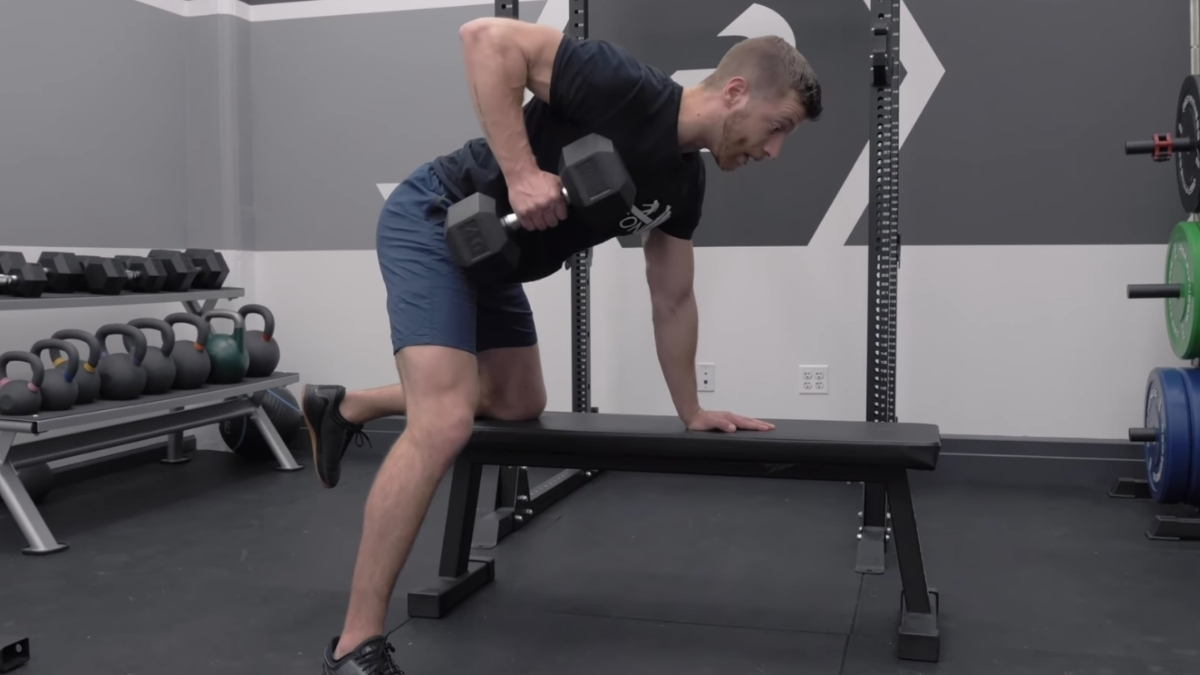When it comes to building muscle, the debate between using machines or dumbbells is a longstanding one.
This argument has been going on for so long. It’s time to dive into both dumbbells and hypertrophy and find which is best for you.
What are Dumbbells / Free Weights?
Dumbbells, a type of free weight, are small, handheld weights that come in various sizes.
They offer a range of motion that is more natural and free-form. This way, you are not restricted to a specific movement pattern.
Although they aren’t technically the same, Kettlebells can still be used like dumbbells for some exercises.
What are Machines?
Workout machines are designed to target specific muscle groups with controlled movements.
These machines often provide external stability, allowing you to focus on lifting heavier weights safely.
This can be very beneficial for beginners who are learning proper form or for those focusing on isolating specific muscles.
Which is Better for Hypertrophy: Machines or Dumbbells?
First, let’s get this out the way, you can use both Machines and/or Dumbbells to achieve hypertrophy or gain muscle.
There is no doubt or argument about that.
The question is, which will help you achieve hypertrophy more effectively?
The Argument for Machines
For isometric-specific exercises, machines, in most cases, allow you to lift heavier than dumbbells.
Usually, the reason for this is that you can get some type of external stability to use to lift more with adequate form.
Not all machines have something to easily stabilize yourself on, and some machines are better than others overall because of this.
Stability
Let’s use the example of a dumbbell row vs a machine row.
A dumbbell row has you usually stabilizing yourself on a bench press with your arm.
It looks like this:

Image from Barbend
This is good for stability reasons but still difficult because your arm itself will get fatigued from this.
Now let’s look at the machine row:

Image from Muscle and Strength
You can see from this image alone, that the person can prop their feet up for stability. They don’t have to worry about their arm fatiguing just from stabilizing themselves on the bench.
Now, I’ll be honest, this isn’t even the best example of a row that has good stability.
The best one would be something that is a chest-supported machine row.

Image from Titan Fitness
As you can see with this exercise, the chest and feet are supported for stability.
Now, the only thing you need to worry about is your back and the row movement itself.
On the other hand, while it’s often emphasized, the role of stabilizer muscles in hypertrophy is somewhat overstated. They do contribute to overall muscle development, but the primary muscle groups are the main drivers of hypertrophy.
Controlled Eccentric Movement
The eccentric portion of an exercise is very important when it comes to hypertrophy. Many people think it’s just the concentric that grows muscle, but it’s both and there is an argument to be made that you can grow more with a more controlled eccentric overall.
With dumbbells, controlling the eccentric can be a bit difficult when dealing with heavier weights, especially with a lack of stability support.
Machines make this portion of exercising easier overall, especially when lifting heavier.
Having a good controlled eccentric with heavier weight will lead to better hypertrophy overall.
The Argument for Dumbbells
No Restrictive Movement
Dumbell’s main pro is that you can use them in any way. They’re non-restrictive and don’t force you into any position.
Whereas with machines, you’re bound to a specific position. For some, this doesn’t work too well and can cause injury if their biomechanics don’t mesh well with the machine.
More Variation
Considering there is no restrictive movement, you overall get more variety with your exercises.
As we know, variety is the spice of life!
But seriously, having more variety is never a bad thing. Being able to do more or something that you’re comfortable with will usually be better than being stuck with a certain amount of exercise.
You can do more exercises with a pair of dumbbells than you can with 1 machine.
What Builds Muscle the Best?
Considering the points above, I would always choose a machine over free weights for hypertrophy if the opportunity exists and the exercise is ideal for what I’m trying to build.
Now, this doesn’t mean I don’t or wouldn’t use dumbbells. Dumbbells can still build muscle very effectively.
I find through most exercises, when they have a machine option, I have:
- Better stability
- More control over the weight
- Less room for error
- Can “easily” take to failure or close to failure
Considering those points, having all that accounted for should lead to better hypertrophy.
If I can’t train as hard as I need to in an exercise because of fatigue of stability or lack of control, I won’t be getting the best results overall.
Use What You Like Best
In the end, machines and dumbbells can both build muscle effectively. That’s not an argument.
However, I do believe some machines offer more value and allow you to solely focus on just moving the weight without any other worries.
When you don’t have to worry about other external issues like stability or other areas being fatigued due to form on free weights, you get to move the weight better and more effectively.
This overall will lead to better gains for most.
However, you should use what you like best.
Any exercise that you can do with a high intensity and not get hurt regardless if it’s a machine or dumbbell, then you should do that exercise.













